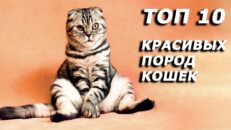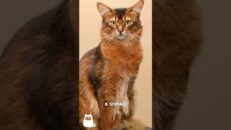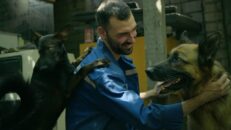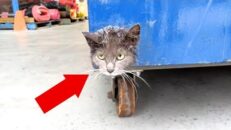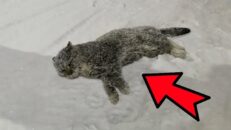Cat self cleaning instinct #persian_cat #obedient_cat
one of my best video : https://youtu.be/0FHiopiHgxk
The Persian cat is a long-haired breed of cat characterized by its round face and short muzzle. It is also known as the «Persian Longhair» in the English-speaking countries. The first documented ancestors of the Persian were imported into Italy from Iran (historically known as Persia in the west) around 1620.Recognized by the cat fancy since the late 19th century, it was developed first by the English, and then mainly by American breeders after the Second World War. Some cat fancier organizations’ breed standards subsume the Himalayan and Exotic Shorthair as variants of this breed, while others treat them as separate breeds.
The selective breeding carried out by breeders has allowed the development of a wide variety of coat colors, but has also led to the creation of increasingly flat-faced Persians. Favored by fanciers, this head structure can bring with it a number of health problems. As is the case with the Siamese breed, there have been efforts by some breeders to preserve the older type of cat, the traditional breed, having a more pronounced muzzle, which is more popular with the general public. Hereditary polycystic kidney disease is prevalent in the breed, affecting almost half the population in some countries.
In 2015 it was ranked as the second most popular breed in the United States according to the Cat Fanciers’ Association. The first is the Exotic breed.
The first documented ancestors of the Persian were imported from Khorasan, Iran, into Italy in 1620 by Pietro della Valle, and from Angora (now Ankara), Ottoman Empire (Turkey), into France by Nicholas-Claude Fabri de Peiresc at around the same time. The Khorasan cats were grey coated while those from Angora were white. From France, they soon reached Britain.
Recent genetic research indicates that present day Persians are related not to cats from the Near East but to cats from Western Europe. The researchers stated, «Even though the early Persian cat may have in fact originated from Persia (Iran), the modern Persian cat has lost its phylogeographical signature
The traditional Persian, or doll-face Persian, are somewhat recent names for what is essentially the original breed of Persian cat, without the development of extreme features.
As many breeders in the United States, Germany, Italy, and other parts of the world started to interpret the Persian standard differently, they developed the flat-nosed «peke-face» or «ultra-type» over time, as the result of two genetic mutations, without changing the name of the breed from «Persian». Some organizations, including the Cat Fanciers’ Association (CFA), consider the peke-face type as their modern standard for the Persian breed. Thus the retronym Traditional Persian was created to refer to the original type, which is still bred, mirroring the renaming of the original-style Siamese cat as the Traditional Siamese or Thai, to distinguish it from the long-faced modern development which has taken over as simply «the Siamese».
Not all cat fancier groups recognize the Traditional Persian (at all, or as distinct), or give it that specific name. TICA has a very general standard that does not specify a flattened face
In the US, there was an attempt to establish the silver Persian as a separate breed called the Sterling, but it was not accepted. Silver and golden Persians are recognized, as such, by CFA. In South Africa, the attempt to separate the breed was more successful; the Southern Africa Cat Council (SACC) registers cats with five generations of purebred Chinchilla as a Chinchilla Longhair. The Chinchilla Longhair has a slightly longer nose than the Persian, resulting in healthy breathing and less eye tearing. Its hair is translucent with only the tips carrying black pigment, a feature that gets lost when out-crossed to other colored Persians. Out-crossing also may result in losing nose and lip liner, which is a fault in the Chinchilla Longhair breed standard. One of the distinctions of this breed is the blue-green or green .

